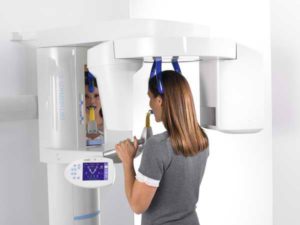Dentists always think about our welfare. That is why they are so grateful to the new advancements of dental technology in which we can enjoy convenient and innovative treatments. Let’s start with the newest digital dental x-ray – the Galileo’s 3D imaging system. 
Dental x-rays have evolved so much today. From simply 2D imaging, the device is now in 3D where its scope is no longer limited. Galileo’s 3D imaging system is a proof to that. Such device is conveniently favorable particularly to patients who will undergo dental implant procedure. Besides the accuracy in handling restorations, Galileo’s 3D imaging measures bone density.
Galileo’s 3D imaging system is often used for preparation on dental implants. One of the processes done is evaluating your jawbone’s thickness and quality. This is to ensure that your jaw is healthy and if it fits or can accommodate to the dental implant procedure. And since Galileo’s imaging system comes now in 3D scans, your dentist can easily perceive the thickness of your jawbones. Once assessed, your dentist will finally determine the appropriate size of implants.
Majority of dental experts said that the 3D scan of Galileo’s is just a bonus. What they truly love about this equipment is its capability to provide quick, convenient and accurate diagnosis. It also displays more details compared to traditional dental x-rays. This gives your dentist detailed information about your jaw, teeth and mouth. The details used and generated by the system are used as tools to make your implants more successful and better to wear, feel and look! Furthermore, it is used to determine conditions which cannot be identify by traditional dental x-rays. Among the dental problems identified by this 3D imaging system are abnormal growths, sleep apnea, damaged dental nerves and oral cavities.
Galileo’s 3D Imaging as the Newest Patient Care
Modern dentistry is beyond proud of this 3D imaging system. Most dental professionals are not just impressed to its convenience – but also to its precision. Unlike the 2D imaging of traditional dental x-rays, Galileo’s 3D imaging solution provides diagnosis with accuracy with one-to-one image. Because of its consistency, the dentist can provide better care with better outcomes to the patient.
There are also dental professionals stated that Galileo’s 3D imaging is a good patient education tool. This allows patients to understand their oral health through a framework that is based on real-life perspectives. With enhanced treatment and care provided and well-delivered by this system, dentists can ensure a better bond with their patients.
In typical cases, the scanning process of Galileo’s 3D imaging scan can be completed in 14 seconds. This provides the needed and necessary details for your custom-made treatment planning. Since the imaging software does the rest of the work, as a patient, rest assured you get the needed treatment together with the implant planning and guides for surgical procedures you need. One thing you can also enjoy from Galileo’s 3D imaging solution is the low radiation. Unlike the traditional dental x-rays, this advanced tool provides low dose of radiation to patients. This is less than half of the radiation given by the traditional dental x-rays.
How Galileo’s 3D imaging solution works?
It works with precision, accuracy and convenience. It is also user-friendly. The imaging devices utilizes a Cone Beam Imaging System that is located at the center of the scanner. It has a capacity that can work on taking clear photographs of your face, mouth and jaw which is reserved for future use. The pictures are exact 3D images. Your dentist can see the inner mechanisms of your face and jaw and can zoom the image to view the specific areas – angle by angle. Since the patients are only required to sit on the dental chair, there’s no need to fret as the scanner comes with an open environment.
Galileo’s 3D imaging system is a very credible dental tool. Aside from cutting down the cost of treatments in the future, this system only requires fewer dental office visits.
If you’d like to learn more about this cutting-edge imaging system, consult one of our board certified oral surgeons.